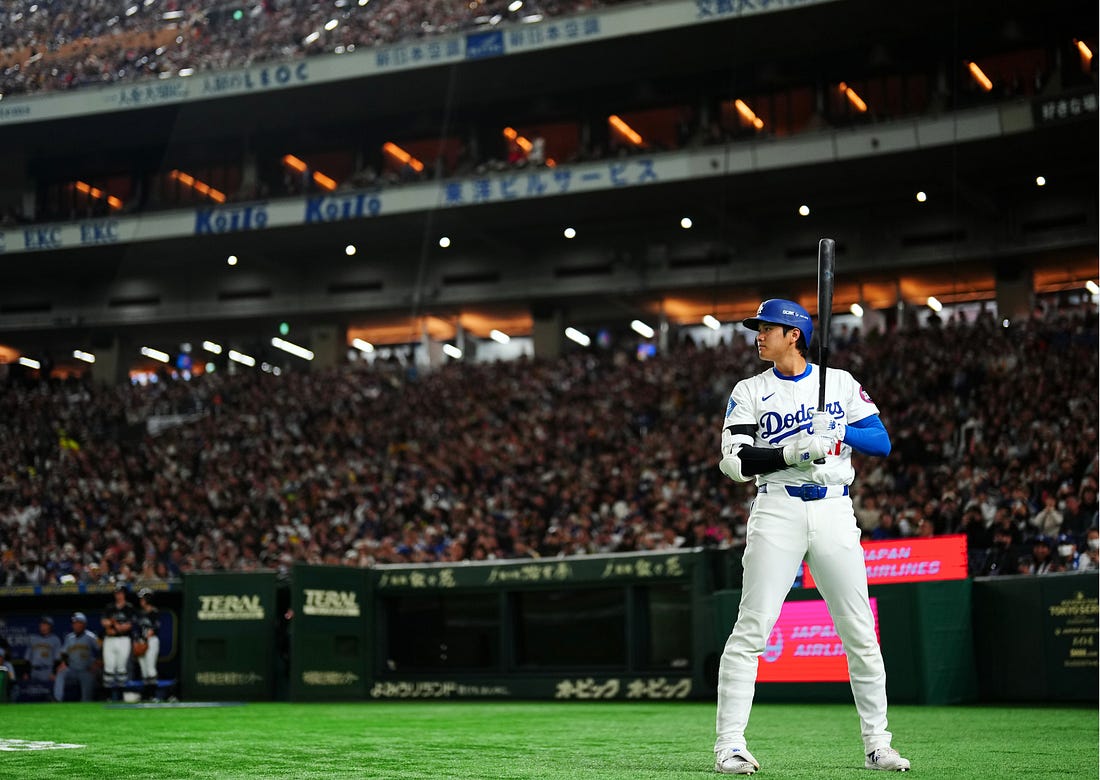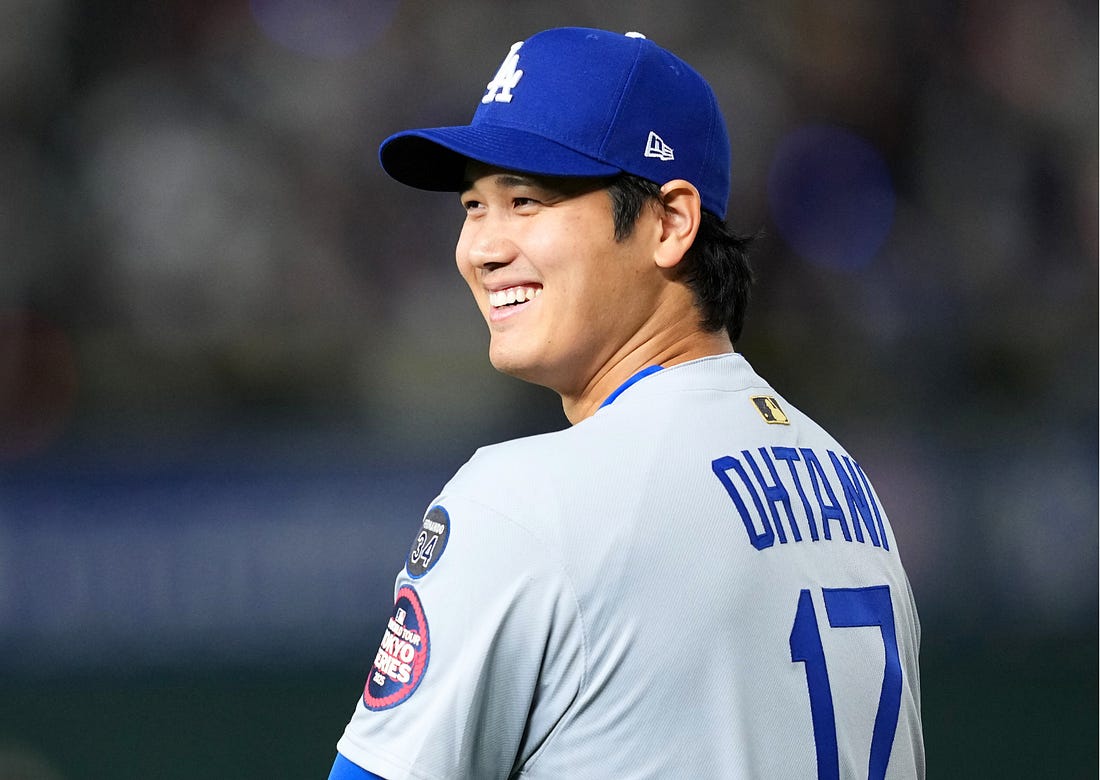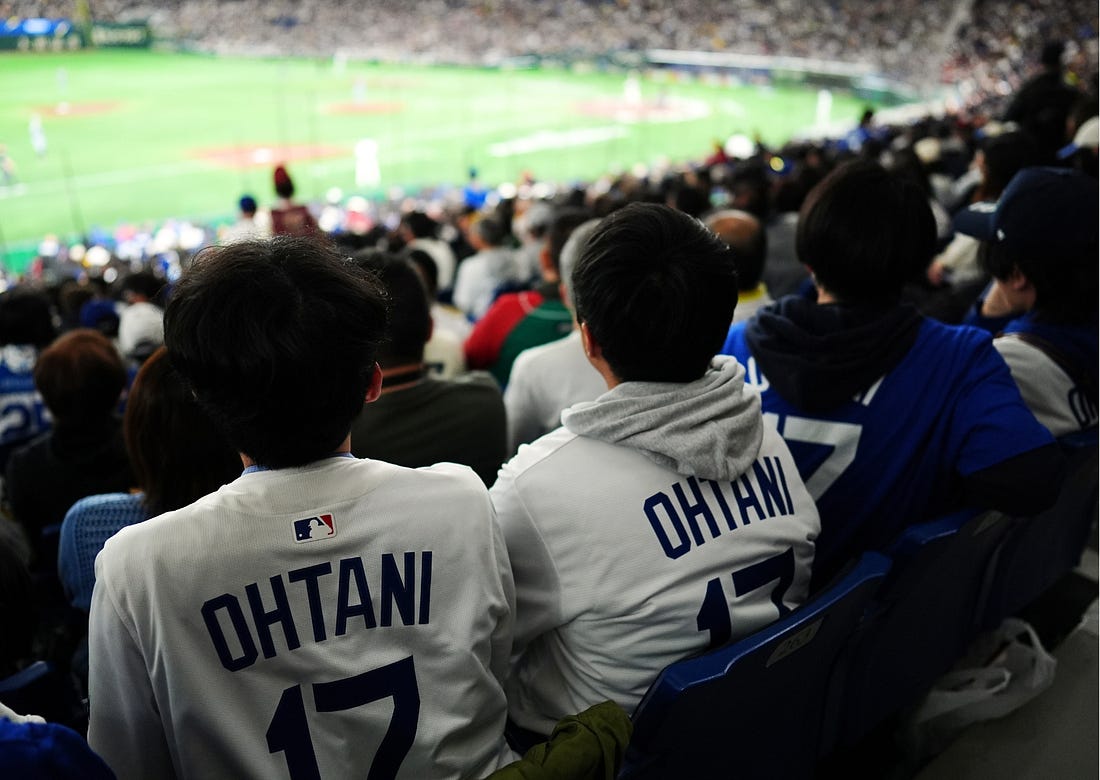The Dodgers are Japan’s favorite MLB team (and will make billions as a result)
The Dodgers are Japan’s favorite MLB team (and will make billions as a result)The LA Dodgers have spent years implementing a plan to become Japan’s favorite baseball team. Now, it is paying off, accounting for $100 million in additional revenue last year alone.
Last weekend, more than 10,000 people visited the Tokyo Dome in Japan to see Shohei Ohtani and the Los Angeles Dodgers. Fans paid thousands of dollars to sit behind home plate and hundreds of media members were on the field with cameras and microphones. But these people weren’t there to see a game — Ohtani and the Dodgers were only there for a workout, jogging around the bases and playing catch for an hour. This is how much Japan loves baseball, and it’s exactly why MLB sent two of its teams halfway across the world to play regular season games a week before Opening Day. The Tokyo Series is a two-game series of regular-season games between the Chicago Cubs and Los Angeles Dodgers in Tokyo, Japan. The Cubs and Dodgers began the week by playing exhibition games against local teams — the Hanshin Tigers and Yomiuri Giants — before kicking off the 2025 regular season on Tuesday morning. I’m sure some Dodgers fans weren’t happy about the team’s first games taking place at 3 am local time, but MLB doesn’t care. Commissioner Rob Manfred says this year’s Tokyo series will generate $35 million in revenue, mainly through ticket sales and 22 sponsorship deals. It’s also part of a larger plan to grow the game internationally, with most of MLB’s domestic and international TV rights set to end after the 2028 season. The Cubs have two Japanese players on their roster, but this series is really about the Dodgers. The defending World Series champions have spent the last several years intentionally implementing a strategy to become Japan’s favorite team, hoping it would lead to on-field success and, more importantly, billions in additional revenue. This started in 2023 when Dodgers executives flew to Tokyo for a scouting trip during the World Baseball Classic. There were 20,000 Japanese fans in attendance for the workout, but Dodgers leadership realized that these fans were wearing a diverse mix of MLB hats representing various teams, and that’s when a lightbulb went off. Shohei Ohtani and Yoshinobu Yamamoto were already on their radar, but what if the Dodgers could corner the market by focusing on top Japanese talent to sway fandom? The phrase “paint Japan blue” became a shorthand for this ambition. It wasn’t just about signing top players but leveraging those players to create a cultural shift. The Dodgers initiated this plan by handing Shohei Ohtani a record $700 million contract later that year. Although this looked like an overpay at the time, the Dodgers reduced Ohtani’s salary cap number by pushing $680 million of the payments out into the future, and it now looks like a bargain after the Mets gave Juan Soto $765 million. Ohtani’s deferred payments were important because it forced MLB to value the deal at $460 million based on its present value of future cash flows. This lowered the Dodgers luxury tax number, and since half of luxury tax payments go to teams that don’t exceed that year’s tax threshold, it meant that the Dodgers were able to artificially lower the amount of money they were sending to MLB’s lower-spending teams each year. MLB also requires teams to put deferred payments into an escrow account within two years of when they are earned. This is an old rule that was implemented to protect players from teams potentially going bankrupt. But since the Dodgers are owned by Guggenheim — a $300 billion asset management firm — it meant that they could invest the money in the meantime, further reducing the total value of Ohtani’s deal. The Dodgers then doubled down a year after the Ohtani contract, signing Yoshinobu Yamamoto to a 12-year, $325 million deal—the largest contract ever for a pitcher in MLB history. This helped the team win a championship last year, and the Dodgers followed it up by signing Japanese pitching sensation Roki Sasaki this offseason. Since Sasaki is younger than 25, he is considered an amateur international free agent. The Dodgers still gave Sasaki a $6.5 million signing bonus, but his status provides the Dodgers with six years of club control and only requires a rookie salary of $780,000. Many say the Dodgers can only afford these contracts because they have a massive local TV rights deal — a 25-year pact worth $8.35 billion, or $334 million annually. That’s true, but it also ignores reality. The Dodgers were comfortable handing out these contracts because they knew they would make even more money in the long run. The Dodgers are now by far the most popular MLB team in Japan. They only have three Japanese players on their opening day roster, but that’s more than any other MLB team and it also includes the sport’s single most popular player, Shohei Ohtani. The Los Angeles market is perfect for this type of strategy because the 16-hour time difference allows local fans in Japan to watch primetime games during lunch. As a result, Ohtani merchandise accounted for 57% of all MLB merchandise sales in Japan last year, with the new Fanatics store outside the Tokyo Dome handling 1,100 transactions per hour on the day of the Dodgers first exhibition game last week. Last year’s World Series also averaged nearly as many viewers in Japan (12.1 million) as in the United States (15.8 million) despite all of the games starting at 9 a.m. And if you fly across the Pacific Ocean, the financial impact is even greater in Los Angeles. I’ve been told Ohtani was worth over $100 million to the Dodgers last year. Some of that comes from increased ticket sales and in-stadium merchandise purchases, but the Dodgers also signed dozens of new Japanese sponsors, and they ran out of inventory so quickly that Japanese brands were buying ads in other ballparks for away games. Even crazier, Japanese tourism agencies were sending hundreds of people to every Dodgers home game, and the LA Tourism Board estimates that 80% to 90% of all visitors from Japan stopped by Dodgers Stadium at least once during their trip to LA. Some baseball fans have speculated that Commissioner Rob Manfred and many of the league’s poorer teams will try to put a stop to this during the next CBA negotiation because the gap between big and small market teams is widening. But don’t think for a second that Major League Baseball doesn’t love what is happening in Los Angeles. As I mentioned before, MLB has strategically set up its domestic and international media rights so that most of them expire simultaneously in 2028. MLB currently has ten different television partners in Japan alone, but with interest increasing across all of East Asia, Manfred has already floated the idea of selling an international package. It’s easy to see why a streaming company like Netflix would pay a lot of money for this package, unlocking MLB’s next major growth channel. This is also a big reason why MLB says it wants to return to Tokyo for a series of games every two to three years. If you enjoyed this breakdown, share it with your friends. Huddle Up is a 3x weekly newsletter that breaks down the business and money behind sports. If you are not a subscriber, sign up and join 130,000+ others who receive it directly in their inbox each week. You’re currently a free subscriber to Huddle Up. For the full experience, upgrade your subscription.
© 2025 |



